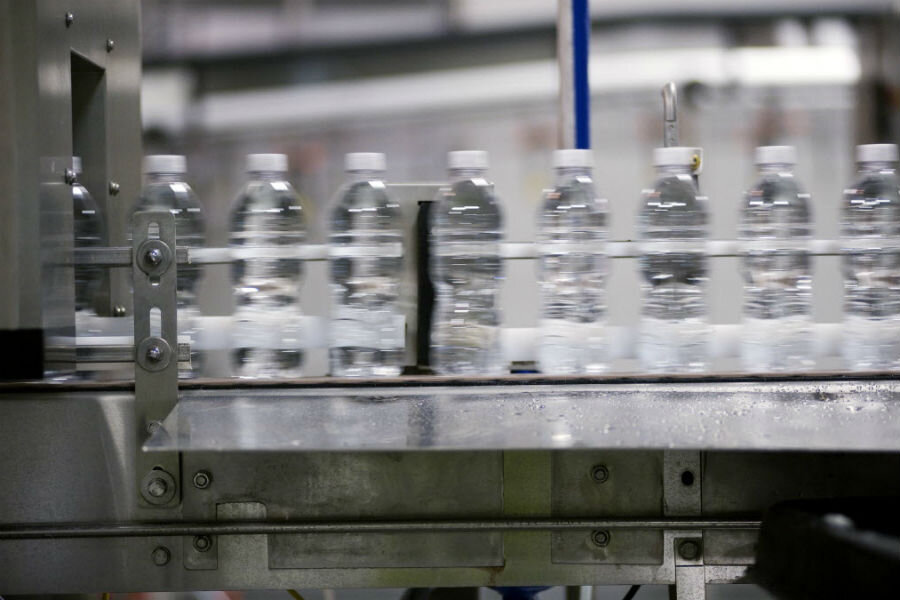Why Americans are buying more bottled water than soda this year
Loading...
It's official: Bottled water is more popular than soda.
This year, for the first time, bottled water sales are expected to surpass soda sales in the United States, according to projections from market research firm Euromonitor. The firm estimates that each American will purchase, on average, 27.4 gallons of bottled water, compared to 26.2 gallons of traditional carbonated sodas.
Some analysts attribute the popularity of bottled water this year to fears of contaminated tap water, in reaction to infamous lead contamination problems in places such as Flint, Mich. Others say it's merely a continuation of a trend that's been ongoing for at least a decade, in which increasingly health-conscious Americans are turning away from soda and toward more natural beverages.
"Concerns in places like Flint do bring bottled water to people's attention as a safe and sealed source of drinking water," said Jane Lazgin, a spokeswoman for Nestlé Waters North America, to Bloomberg.
An Associated Press-GfK poll earlier this year showed that only about half of Americans are "very confident" in the safety of their tap water, and a majority perceive the lead contamination in Flint as a sign of a more widespread water safety problem. Only one third of respondents reported drinking straight tap water at home, with another third drinking filtered tap water, and the last third preferring bottled water.
"I use, for drinking, all bottled water and have forever," Peggy Schwartz, a realtor from Phoenix, Ariz., told The Christian Science Monitor in March, saying she preferred the taste. "But I've never had anything tested. I don't know statistically if it's good, bad, or what."
Contaminated tap water is a relatively recent concern, says Chris Hogan, vice president of communications at the International Bottled Water Association. He and other industry leaders attribute bottled water's popularity to "a larger trend" of growing health consciousness among Americans "that's been happening for a long time."
"What we're seeing is that people are generally starting to make healthier choices more frequently when it comes to food and drink," Mr. Hogan tells the Monitor in a phone interview. "And bottled water, for many people, is really the healthiest and easiest way to make a good food choice."
But the rise of bottled water has not been without obstacles. The industry has faced significant pushback because of environmental concerns: Only 82 percent of the 42.6 billion plastic bottles purchased every year are recycled, the Monitor's Olivia Lowenberg reports, meaning than an estimated 7.7 billion bottles are thrown in the trash each year.
Sales of bottled water have been banned in many places, including the Detroit Zoo and at least 20 national parks. In Virginia, state agencies and institutions were briefly banned from purchasing individual-sized water bottles, until the ban was reversed in 2010.
As a result, many bottled water companies have taken steps in recent years to earn the industry a more environmentally friendly reputation. These efforts include using less plastic, downsizing caps and labels, and using more recycled plastic, Hogan says. Some companies have begun to take a more active role in ensuring that their bottles are recycled by setting up initiatives to get their bottles back.
Despite the environmental concerns it raises, the data suggest that bottled water isn't going away anytime soon: Euromonitor predicts that the gap between water and soda will grow even wider in coming years, as Americans are projected to buy an average of 29.8 gallons of water each, and 24.1 gallons of soda, in 2020.
"For thousands of years, water was beverage of choice for human beings," said Kim Jeffery, the former chairman and chief executive officer of Nestlé Waters North America, to the Associated Press in 2013. "Now we're reverting back to that."






